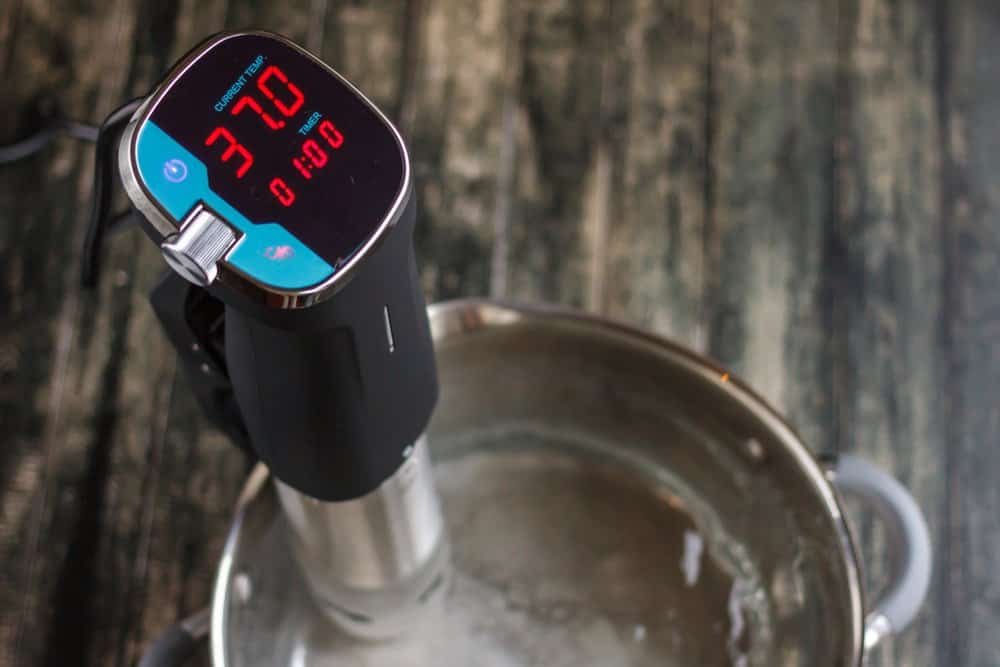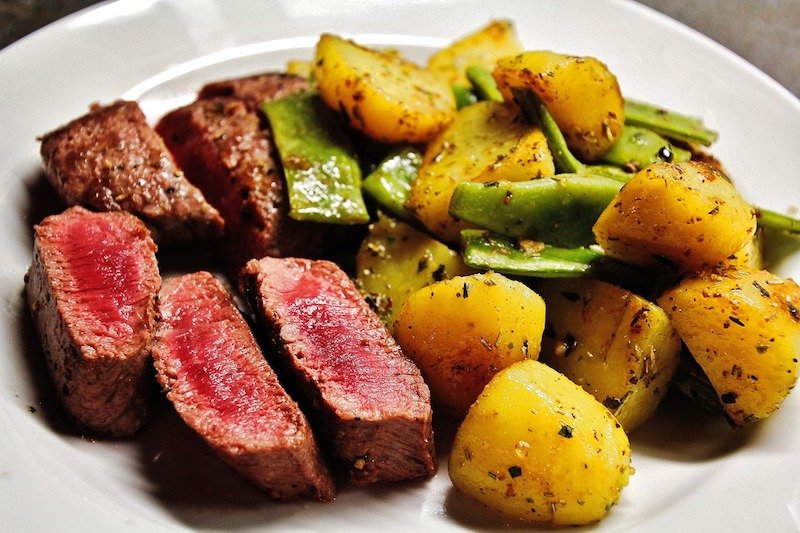How Are Sous Vide Foods Reheated?
How often do you end up with leftovers after crafting delicious meals with your sous vide machine?
Since you made them with your sous vide cooker, have you ever wondered how you should reheat your leftovers you’ve kept in the fridge without sacrificing the quality results you got with the sous vide method? Should you use your sous vide machine again? Can you use the oven or microwave?
So, how are sous vide foods reheated, you ask? You can reheat with the sous vide method, but you can also use a microwave (it’ll just make your meal less succulent). Read on to find out more about the techniques you can use.
How to Reheat With Sous Vide
The first thing to know about reheating sous vide foods is that it doesn’t mean overcooking. You want to keep the food in optimal condition and enjoy it as you did when you first cooked it.
To achieve that, you can reheat it the very same way you cooked it with your sous vide machine but with slight adjustments.
The reheating time depends on how thick the meat is. I’ll give you some estimates based on the assumption that the water temperature is between 110°F and 175°F.
- If you’re reheating a 10-millimeter steak, it may take around 20 minutes to get it ready for serving.
- A thicker slab of meat, like a 60-millimeter steak, may take up to five hours.
- A thin roulade up to 25-millimeter thick is usually done in 40 minutes.
- A meatball can take up to 90 minutes, depending on how thick it is.
Restaurants usually reheat meat in a 131°F (55°C) water bath.
As far as the amount of time meat is reheated for at this temperature, check out Tables 2.2 and 2.3 here.
Refer to Table 2.2 if you’re reheating from fridge temperatures or Table 2.3 if you’re reheating from frozen.
Sous Vide Reheating Time Calculation Based on Thickness
As a rule of thumb, if you’re using a sous vide machine to reheat your food, whether it was originally cooked with a sous vide or not, is that it will take roughly 45 minutes per inch of thickness to heat up.
Using the example above, a one inch thick meatball shouldn’t take more than 45 minutes to heat up, whereas a two inch thick meatball could take around 90 minutes.
Reheating Odd-Shaped Food with a Sous Vide Machine
And how are sous vide foods reheated if you’re not exactly sure about the shape? It’s not really a ball, nor a roulade.
This can happen with some roasts or lamb legs, for example – they seem cylindrical. In this case, take the two closest shapes and base the reheating time on their average.
Tips for Reheating With Sous Vide
An essential factor you need to keep in mind when reheating sous vide food is the temperature. It needs to be lower than the temperature you’ve cooked the food at.

Reheating Meat
Any meat that’s been prepared in advance is considered tender if you’ve used the sous vide method.
That means the meat is moist, but you may lose all these benefits from using the sous vide technique if you use temperatures higher than what you cooked it at for reheating it.
Keep in mind that the ideal temperature for serving meat is 120°F–130°F (50°C–55°C).
Reheating Liquid Foods
Other than meat, you can use sous vide to reheat purées, sauces, and soups.
It’s actually much better to use this method than reheat these foods on a stove because it doesn’t ruin their texture or flavor.
If reheating purées, for instance, you’ll want it to reheat as evenly as possible. That’s why it’s better to make smaller portions and use several bags to place in the water.
When it comes to evenly apply heat to food, there’s nothing better than the sous vide method.
Reheating Frozen Food
Sous vide cooking also works well for reheating frozen food. That certainly makes your life easier since you can cook in advance.
Click here to learn more about how to use your sous vide cooker to handle frozen food.
Get a Good, Quality Sous Vide Device
If you want to make sure you’re making the most out of your sous vide foods, a good digital thermometer is necessary.
Note that I’m not talking about a separate thermometer from the sous vide immersion circulator itself.
Sous vide immersion cookers come with their own thermometer to provide you with accurate and constant temperature readings of the water bath.
The point here is that you want to invest money in a sous vide device that comes with accurate thermometer and temperature readout display included.
Those who plan to use this cooking method a lot won’t regret this small investment. The more accurate the thermometer on your sous vide machine is, the better your end results will be.
My 5 favorite sous vide immersion circulators:
Other Methods for Reheated Sous Vide Foods
If you have a microwave, it’s perfectly fine to reheat your food that way, even if you’ve cooked it using the sous vide method.
However, bear in mind that this type of reheating will probably eliminate the juiciness and the richness of flavor from the food, especially meat.
If you’re okay with that, a microwave works just as well.
In Summary
Sous vide cooking isn’t complicated – just get sous vide bags, a container, and a good immersion circulator, and you’re ready to go.
Your friends will be impressed by your delicious meals, even if you’ve cooked them in advance and reheated them for your dinner party.
Hopefully, this article answers the question of how to reheat sous vide foods and gives you ideas for your next kitchen adventure.












